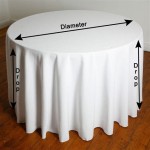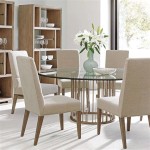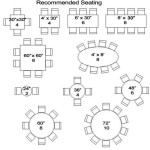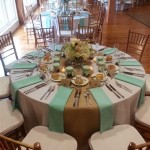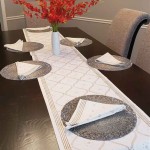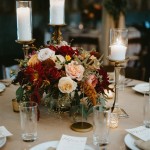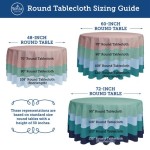Quilted Table Topper Ideas: Enhancing Your Home Décor with Fabric Art
Quilted table toppers serve as functional and aesthetically pleasing additions to any home. They provide a protective layer for tables, preventing scratches and heat damage, while simultaneously offering an opportunity to showcase quilting skills and complement existing décor. These fabric creations are often smaller projects than full-sized quilts, making them accessible to quilters of various skill levels and allowing for experimentation with different techniques and designs. A well-chosen quilted table topper can transform a mundane surface into a focal point, reflecting personal style and adding a touch of warmth and artistry to the room.
The versatility of quilted table toppers lies in their adaptability to various table sizes and shapes. Whether round, square, rectangular, or oval, a topper can be custom-made to perfectly fit the intended surface. The design possibilities are virtually limitless, ranging from simple geometric patterns to intricate pictorial representations. The choice of fabrics, colors, and quilting designs offers further customization, ensuring that each table topper is a unique expression of the quilter's creativity and the homeowner's taste.
Exploring Different Table Topper Shapes and Sizes
The shape of the table topper is a primary consideration when planning a project. Round table toppers often showcase radial designs, with elements emanating from a central point. This can be achieved through piecing techniques like wedges or segments, or through elaborate quilting motifs that radiate outwards. Square table toppers lend themselves well to grid-based patterns, such as traditional quilt blocks arranged in a symmetrical layout. The edges can be finished with a straight binding for a clean, modern look, or with a scalloped or wavy edge for a more whimsical feel.
Rectangular and oval table toppers provide a larger canvas for showcasing more complex designs. These shapes are ideal for incorporating borders, which can frame the central design and add visual interest. Consider using different border widths or applying techniques like mitered corners for a polished finish. The size of the table topper should be proportional to the size of the table. A general guideline is to allow a slight overhang on all sides, typically ranging from 6 to 12 inches, depending on personal preference and the overall aesthetic.
Beyond the standard shapes, consider creating table toppers that mimic natural forms, such as leaves or flowers. These free-form designs can add a unique and organic touch to the table setting. The edges can be raw-edged for a rustic look or finished with decorative stitching to prevent fraying. Template-making skills become crucial for achieving accuracy and consistency in these types of projects.
Fabric Selection and Color Palette Strategies
The selection of fabrics plays a crucial role in the overall impact of a quilted table topper. Consider the color palette of the surrounding room and choose fabrics that complement or contrast with the existing décor. A neutral color scheme, such as creams, grays, and whites, can provide a calming and sophisticated look, while bolder colors, such as reds, blues, and greens, can add vibrancy and energy to the space. Fabrics with varying textures and patterns can also create visual interest and depth.
The weight and fiber content of the fabrics are also important considerations. Cotton fabrics are a common choice for quilting due to their durability, ease of handling, and availability in a wide range of colors and prints. Linen fabrics offer a more natural and textured look, while silk fabrics can add a touch of luxury and elegance. It is generally advisable to pre-wash all fabrics before cutting and piecing to prevent shrinkage and color bleeding after the table topper is completed.
When selecting fabrics, consider the theme or style of the table topper. For example, a country-themed topper might feature fabrics with floral prints, gingham checks, or homespun textures. A modern topper might incorporate geometric prints, bold colors, and metallic accents. Scrap quilting is a great way to use up leftover fabrics from previous projects and create a unique and eclectic table topper. The key is to coordinate the colors and patterns in a way that is visually pleasing and cohesive.
Quilting Techniques and Design Elements
The quilting design is what transforms a pieced table topper into a work of art. Quilting not only secures the layers of fabric together but also adds texture, dimension, and visual interest. Simple straight-line quilting can create a modern and minimalist look, while more intricate free-motion quilting can add a touch of elegance and sophistication. Echo quilting, where lines of quilting are stitched around the pieced motifs, is a great way to highlight the design and create a sense of depth.
Consider incorporating different quilting patterns within the same table topper to create visual contrast and emphasis. For example, you could use a dense quilting pattern in the background and a more open quilting pattern in the focal points. The choice of thread color can also significantly impact the overall look of the quilting. A contrasting thread color will make the quilting stand out, while a matching thread color will create a more subtle and understated effect. Metallic threads can add a touch of shimmer and glamour to the table topper.
In addition to traditional quilting techniques, consider incorporating embellishments such as beads, buttons, or embroidery to add unique details and personalize the design. Appliqué, where fabric shapes are sewn onto the surface of the table topper, is another popular technique for adding pictorial elements or decorative motifs. The possibilities are endless, and the only limit is the quilter's imagination. Remember to choose embellishments and appliqué fabrics that are compatible with the overall style and theme of the table topper.
Seasonal and Holiday-Themed Table Toppers
Creating table toppers that reflect the changing seasons or celebrate holidays is a popular way to add a festive touch to the home. Spring-themed table toppers might feature floral fabrics, pastel colors, and motifs such as butterflies and birds. Summer-themed toppers might incorporate bright colors, nautical stripes, and motifs such as seashells and anchors. Fall-themed toppers might feature warm colors, leaf patterns, and motifs such as pumpkins and acorns.
Holiday-themed table toppers offer endless opportunities for creativity. Christmas toppers might feature red and green fabrics, snowflake patterns, and motifs such as Santa Claus and Christmas trees. Halloween toppers might incorporate orange and black fabrics, spiderweb patterns, and motifs such as ghosts and bats. Thanksgiving toppers might feature warm colors, harvest themes, and motifs such as turkeys and cornucopias.
When designing seasonal or holiday-themed table toppers, consider the overall color scheme and style of the existing décor. Choose fabrics and motifs that complement the other decorations and create a cohesive and festive atmosphere. Remember to store the table toppers properly after each season or holiday to keep them in good condition and prevent damage.
Caring for Quilted Table Toppers
Proper care is essential to maintain the beauty and longevity of quilted table toppers. It is generally recommended to hand wash or machine wash the table topper on a gentle cycle with cold water and a mild detergent. Avoid using harsh chemicals or bleach, as these can damage the fabrics and cause fading. Tumble dry on low or hang to dry to prevent shrinkage and distortion.
To prevent staining, it is advisable to use placemats or coasters when placing food or drinks on the table topper. If a spill does occur, blot it immediately with a clean cloth to prevent the stain from setting. For stubborn stains, consider spot cleaning with a mild stain remover. Avoid ironing directly on embellishments or delicate fabrics, as this can damage them. If ironing is necessary, use a low setting and a pressing cloth to protect the table topper.
When not in use, store the table topper in a cool, dry place away from direct sunlight to prevent fading. Consider folding it neatly and placing it in a storage bag or container to protect it from dust and moths. With proper care, a quilted table topper can be enjoyed for many years to come, adding beauty and warmth to the home.

W I P Wednesday Table Topper Patterns Quilted Toppers

Quilted Table Runner Patterns Pride Of Italy Centerpiece

Octagonal Table Topper Free Quilt Pattern Quilting

Sterling Table Topper Finish Details The Crafty Quilter

How To Make A Simple Hexagon Table Topper

Quilt Rock Candy Table Topper Pattern 429251 Patterns Quilted Runners

30 Free Table Runner Quilt Patterns And Quilted Toppers Favequilts Com

How To Turn A Swoon Block Into Table Topper The Crafty Quilter

Candy Corn Table Topper Is A Quick And Easy Project Quilting Digest

Play With Color And Value In This Versatile Topper Quilting Digest
Related Posts

